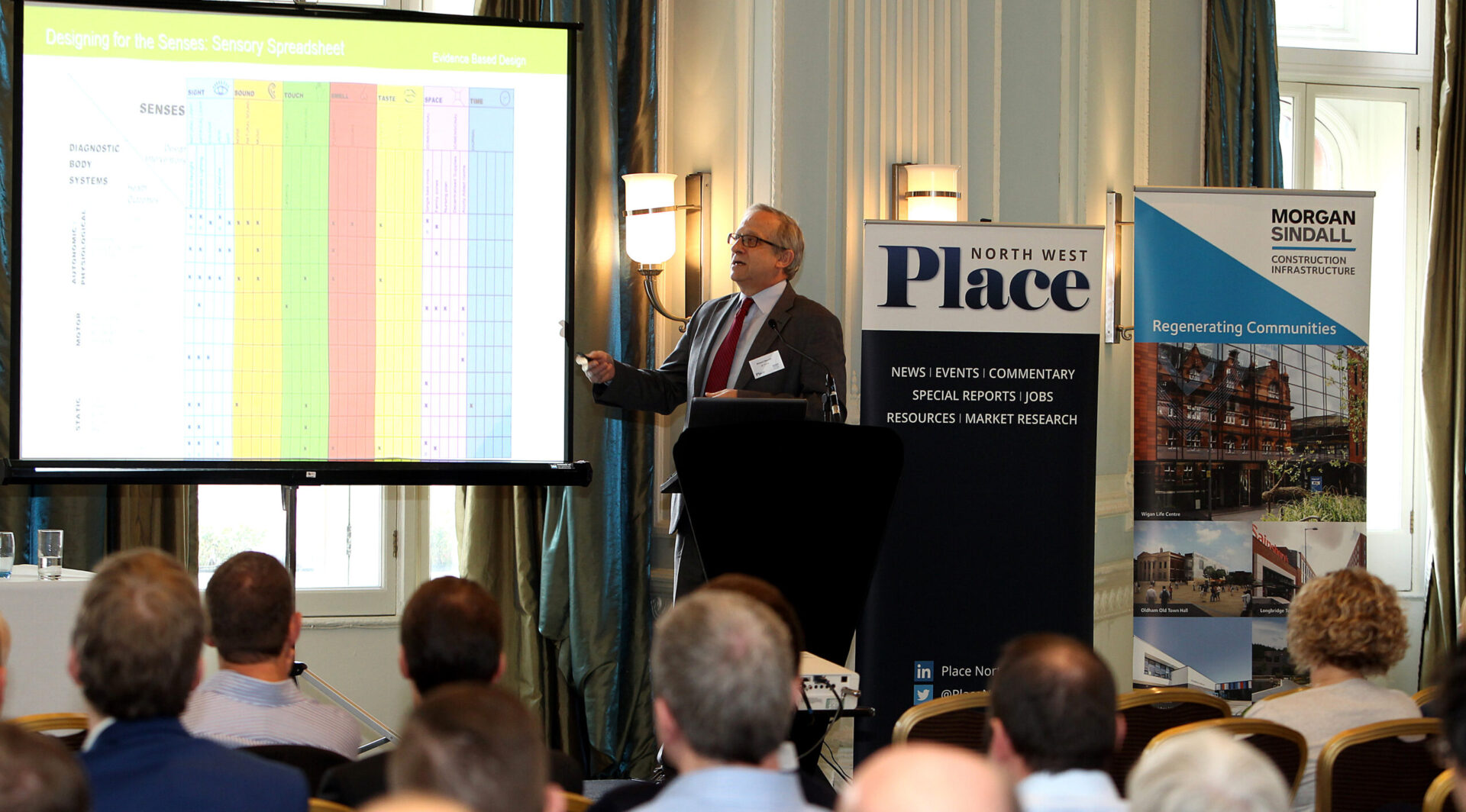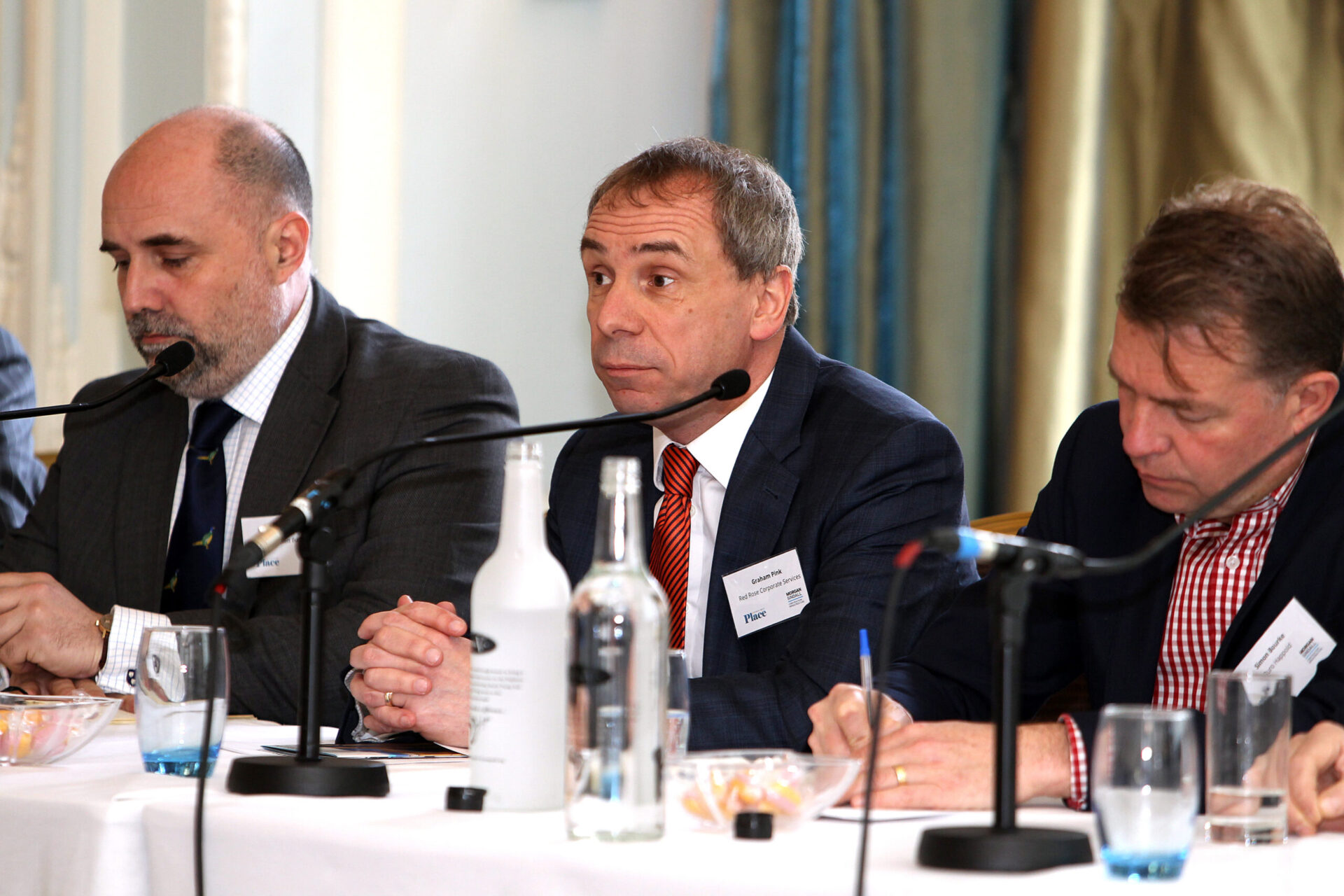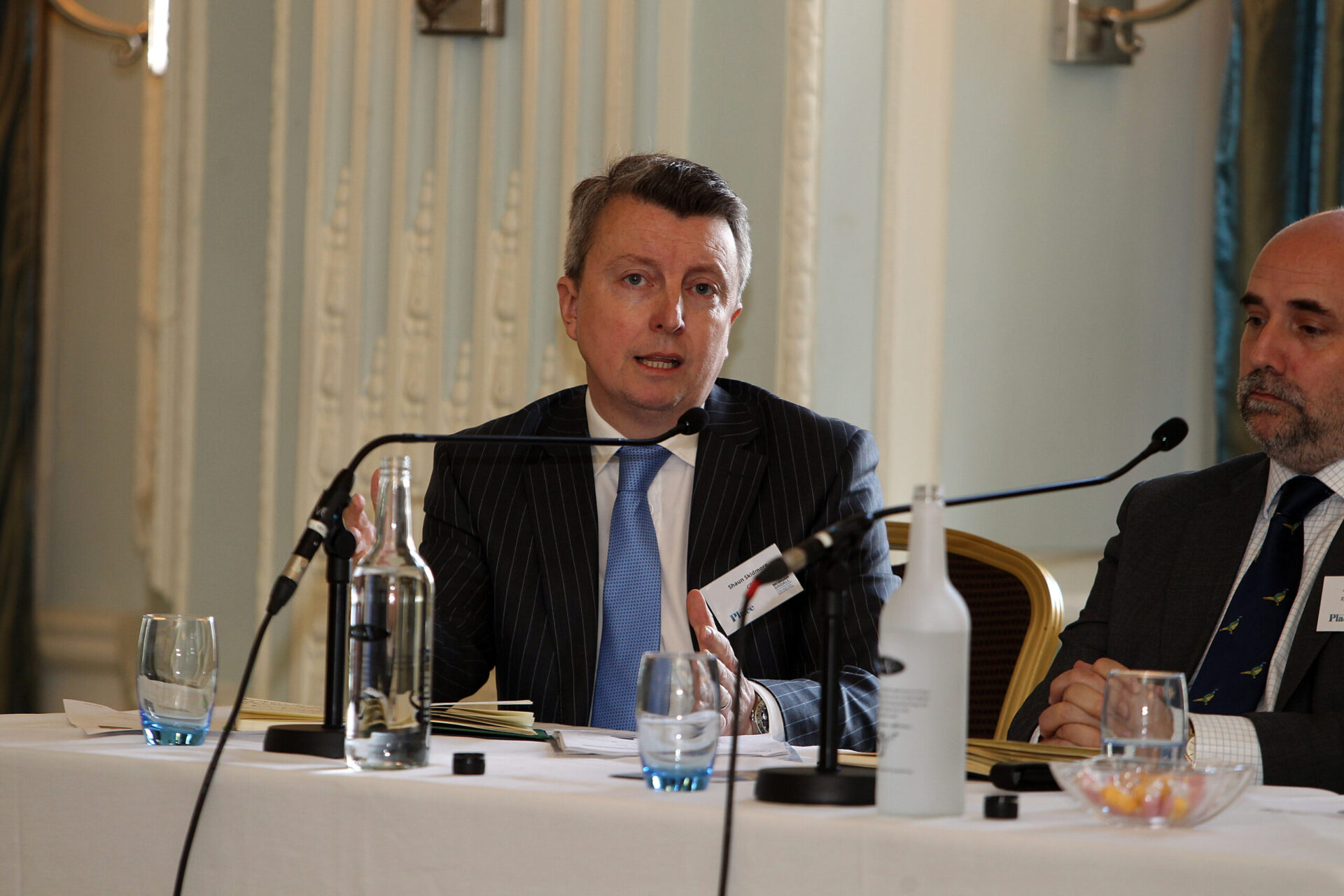Event Summary
Healthcare Property Briefing | Summary, slides + pictures
The briefing event focused on how technology could revolutionise the design and function of the healthcare asset class, from hospitals to care homes, and how to streamline processes and boost patient outcomes at a time of acute pressure within the NHS.
Navigating bureaucracy within the healthcare system, and meeting estate efficiency targets from the Government were also debated at the event, which was sponsored by Morgan Sindall.
See below for link to slides + gallery

Simon Bourke, director at engineer Buro Happold, opened with a presentation emphasising “evidence-based design”, which results in more effective working across hospitals to save costs.
Bourke pointed out that virtual modelling is used to design airports and sports stadia before they are built, but not hospitals.
“We need to look at how spaces work in operation,” he said. “If you understand the process, the place and the people, you will make more efficient buildings.”
Detailed research on how buildings are used would also answer the question as to whether hospitals needed to build more, or “build better”, Bourke said. He stressed that it is important to make estate decisions based on evidence, not guesswork or perception.
In many cases, complaints from health professionals about certain spaces needing expansion, or clinics becoming over-full, could be resolved by looking at how and when certain parts of the estate are being used. According to Bourke, Buro Happold’s research showed that on average, even in peak time only 34% of the space was being utilised, meaning solutions could be given on how to expand hospital functions in these areas, rather than needing to look at expensive new-build options.
“Detailed research enables you to look at the systems, and question the motivation behind certain design suggestions, and prove to the client, ‘you’re not being short changed, but you can achieve what you want to achieve with less space’,” he said. “On the flip side, it also means if estate teams make improvements based on these methods, and there are still space issues, then the team can say they really have done everything, and can make it a priority business case.”

Richard Mazuch, IBI THiNK presents on sensory design
Building for age
Richard Mazuch, director of design research and innovation, IBI THiNK, part of architecture practice IBI Group, uses investigations into the physical and mental needs of the elderly to inform IBI’s designs of care homes and extra care housing.
The in-house research looks at all aspect of the person’s experience within the home environment, resulting in specialist choices in the design, from the structure to the furniture. Mazuch said that the goal was to create “the salutenogenic home of tomorrow”, a medical sociology term which prioritises focusing on supporting health and wellbeing, rather than specifically on the factors that cause disease or illness.
Specialist properties for the elderly could include “supportive and assistive interventions”; extra features such as handrails, floor lighting, extra insulation, textured floors and walk-in baths and showers.
Mazuch’s team focuses on the various senses within the human body to inform its views on care home design, to take note of sensitivities such as light, colour, texture, temperature, and odour.
“We take a detailed look at systems within the human body which are affected by certain environments, and change with age,” Mazuch said. “This includes posture, movement patterns, sleep systems, breathing and digestion, in order to create sensory plans.
“The ergonomics of age affects how we design buildings, as these senses change and decrease with age. Even the way the body is built is altered – we lose a centimetre in height every decade after 40, and this affects how buildings are used.”
Under pressure
Bourke and Mazuch were joined for a panel discussion by Graham Pink, managing director of Red Rose Corporate Services; Adam Ellis-Morgan, director at Rider Levett Bucknall; and Shaun Skidmore, CBRE’s senior director in specialist investment markets.
Ellis-Morgan advises NHS Trusts, the bodies which handle hospital care in the UK, on how they can make estate efficiencies, but in innovative ways. While recent Government recommendations such as the Lord Carter Review published in February advocated the sell-off of underused assets, Ellis-Morgan said that that wasn’t always the best option in the long-term for hospitals, who might lose rate gains or future expansion space if they sold off too soon.

Adam Ellis-Morgan, Rider Levett Bucknall
A big problem within the NHS was the lack of clear communication between estates teams and clinical staff. “They don’t often talk to each other,” he said. “It’s about understanding both the clinical and operational function of how the estate works. Most efficiencies could be made on staff – 60p of every £1 is spent on staff. But ultimately it’s about patient experience at the end of the day.”
Pink, managing director of a public-private partnership between Ryhurst and Lancashire Care NHS Foundation Trust, said that land could be dealt with “creatively” to reach Government targets.
Similarly to Bourke, Pink said data gathering across estates had shown utilisation of 40% or 50%.
“We can improve factors, such as the creativity of how a doctor’s space is used, and bring innovative solutions of how to use the healthcare assets to their best advantage.
“Land can be used as equity to contribute to public sector finance, for instance. The solution is more innovative than simply selling off to the highest bidder.”
However, like Ellis-Morgan, he said that looking at the staff costs would also help create efficiencies. “Buildings only contribute to 7% of the costs, we need to improve the efficiency of how trusts run clinically.”
Health appeal
CBRE’s Skidmore, a specialist in advising investors in specialist markets such as the healthcare sector, said that he was seeing an increase in innovation in terms of financing, and a particular dominance in money from overseas.
“Around £2.8bn was invested in healthcare last year, and £1bn of that was from the US,” he said. “Overseas funders consistently like the healthcare sector, so there must be an opportunity there for getting the necessary finance for projects.”
In particular, Skidmore said that investors responded favourably to GP medical centres and primary care assets, which were seen as good options in terms of the strength of the tenants, and potential yields.

Shaun Skidmore, CBRE
Like many advisors dealing with property investors, Skidmore said that there had been “a little bit of cooling”, in interest in the UK healthcare sector because of the uncertainty brought about by a potential Brexit, but he was confident that “anything prime will get competitive bids and funding”.
Putting a question to the panel, Lexington Communication’s property director Paul Boyfield outlined how, following the devolution of the healthcare budget, Greater Manchester was on the look-out for “holistic solutions” to common health problems. He said the local authority was keen to deliver outcomes in the city region that it could prove would not have happened without the devolution deal.
Pink predicted that money would increasingly flow into the healthcare sector in the coming years, but a shift in power would take place within NHS Trusts, which would influence how investment into property would occur going forward.
Public and private partnership
All the panelists lamented the lack of joined-up thinking or property expertise within the NHS, which Pink described as “like herding cats to get a project through that network”.
“We’ve never had an NHS as fragmented as it is now, in both ownership and the nature of the market,” he said. “We need the private sector to drive schemes through, there’s a state of inertia in the NHS particularly on investment decisions.”
Bourke agreed: “Some trusts and estates just flounder, they don’t know how to create that business case. A private sector-like skill capacity has been lost in the NHS, and I just can’t see them unlocking it themselves.”
Ellis-Morgan stressed that it was time for NHS Trusts to “start thinking more commercially” to bring together “the right people in the right room, at the right time”.
While Skidmore conceded that there was a tension between bringing private professionals into something that is publicly funded “that is needed in terms of actually bringing about project delivery.”
As for the future of the healthcare sector, the panel agreed that it was about “how to do more with less”, and use technological advances to bring about a shift in how health services are delivered.
In particular, Bourke said, the rise of telehealth would “move responsibility for health awareness back to the individual, as a ‘user of health’, and encourage them to be more informed.”
Blurring the boundaries between homes and hospitals, using wearable technologies and sensors set up in homes, was a solution to integrating health into the daily lives of patients, said Mazuch.
“You have hospitals and you have homes, and by using technology and social services coherently you can connect the two.” He said. “Both technology and design can inform how we design these buildings, and shifts treatments towards the home. The technology infrastructure is already there, it’s about releasing its capacity.”
- To view Buro Happold’s and IBI THiNK’s presentations, click here
Click any image below to launch gallery
- Richard Mazuch, IBI THiNK presents on sensory design
- Simon Bourke, Buro Happold, discusses hospital design
- Graham Pink, Red Rose Corporate Services
- Adam Ellis-Morgan, Rider Levett Bucknall
- Paul Unger, editor of Place North West, chaired the discussion
- Shaun Skidmore, CBRE
























